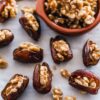Festivals are celebrations of culturally significant events in societies. Some of the oldest forms of festivals were harvest festivals. Ever since man went from being a hunter-gatherer to an agriculturist, seasons have been the center of their activities. Seasons determined the food production which was a basic necessity for a community.
Agriculture is a strategic long haul game. From seed to fruit takes months of hard work and the returns depend of the quality and the quantity of the harvest. The biggest factor in that is the weather conditions during the lifecycle of the crop. If the seasons have been kind, your harvest may be plentiful.
Therefore, at its core, every harvest festival is a celebration of the kindness of the last season and a prayer for good fortune in the coming season. One distinguishing feature of a harvest festival is the food that is traditionally cooked during the festival.
Sweet Pongal
Paddy is South India’s main cultivation; during the Tamil harvest festival of Pongal, a sweet rice porridge that’s cooked with milk, lentils and rice which traditionally harvested during this time. The porridge is sweetened with jaggery, which is made from sugarcane – another seasonal harvest.
Gajjak and Chikki
Lohri (13 Jan) is a harvest festival celebrated in the North. It heralds a new agricultural season and the passing of the longest winter night. ‘Gurh’ or jaggery made from freshly harvested sugarcane, is used to create several sweet treats. One such is Gajjak, a brittle candy of sesame seeds and molten jaggery set into squares. Another is Chikki, a similar treat that uses peanuts.
Til laddoos
What is celebrated as Pongal in the South, is called Makar Sankranti in several states of Central India. Rituals may differ, but celebratory foods bind them. Laddoos made with sesame seeds, jaggery, ghee and cardamoms are popular in Maharashtra. These are all crops traditionally grown in the region and are harvested during this time. Similarly, different food traditions have their roots in the crops traditionally harvested in that state.
Makar Sankranti apart from being a harvest festival also signifies the end of winter. Crop suited for the summer months are sown during this time to be harvested later in the year – coinciding with another harvest festival.
If you’ve ever wondered why India has so many festivals – it’s because of the amount and variety of crops grown in myriad of landscapes in India, it’s always a harvest festival somewhere. The delicious culinary treats are a happy consequence that spans the entire year – The Indian sweet tooth is legendary.
We recently listed some amazing sesame laddoos from Athula Nimrithi Organics. Another delicious Makar Sankranti treat. These laddoos are made from completely organically grown ingredients using natural farming methods. Click here to order before stocks run out!


Comment